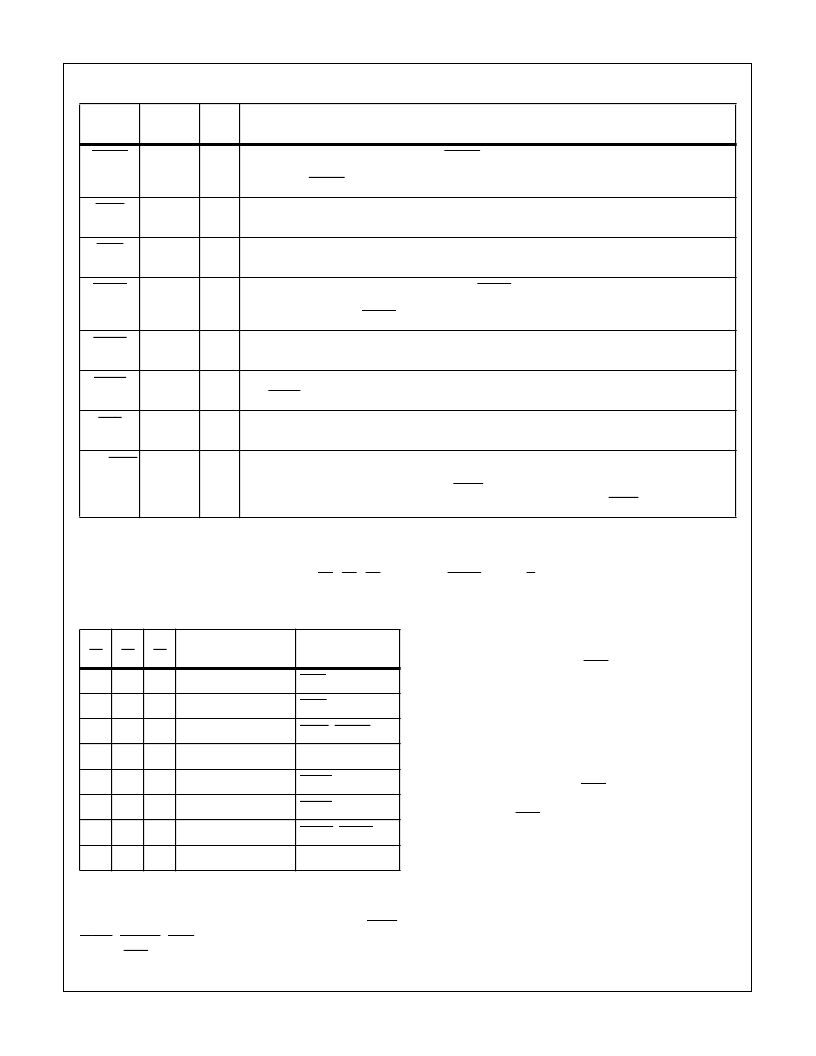- 您現(xiàn)在的位置:買賣IC網(wǎng) > PDF目錄383110 > IP82C88 (HARRIS SEMICONDUCTOR) CMOS Bus Controller PDF資料下載
參數(shù)資料
| 型號(hào): | IP82C88 |
| 廠商: | HARRIS SEMICONDUCTOR |
| 元件分類: | 外設(shè)及接口 |
| 英文描述: | CMOS Bus Controller |
| 中文描述: | 8 MHz, CONTROL AND CMD SIG GEN, PDIP20 |
| 文件頁數(shù): | 3/10頁 |
| 文件大?。?/td> | 129K |
| 代理商: | IP82C88 |

4-335
Functional Description
The command logic decodes the three 80C86, 8086, 80C88,
8088, 80186, 80188 or 8089 status lines (S0, S1, S2) to
determine what command is to be issued (see Table 1).
I/O Bus Mode
The 82C88 is in the I/O Bus mode if the IOB pin is strapped
HIGH. In the I/O Bus mode, all I/O command lines IORC,
IOWC, AIOWC, INTA) are always enabled (i.e., not depen-
dent on AEN). When an I/O command is initiated by the pro-
cessor, the 82C88 immediately activates the command lines
using PDEN and DT/R to control the I/O bus transceiver. The
I/O command lines should not be used to control the system
bus in this configuration because no arbitration is present.
This mode allows one 82C88 Bus Controller to handle two
external busses. No waiting is involved when the CPU wants
to gain access to the I/O bus. Normal memory access
requires a “Bus Ready” signal (AEN LOW) before it will pro-
ceed. It is advantageous to use the IOB mode if I/O or
peripherals dedicated to one processor exist in a multi-pro-
cessor system.
System Bus Mode
The 82C88 is in the System Bus mode if the IOB pin is
strapped LOW. In this mode, no command is issued until a
specified time period after the AEN line is activated (LOW).
This mode assumes bus arbitration logic will inform the bus
controller (on the AEN line) when the bus is free for use.
Both memory and I/O commands wait for bus arbitration.
This mode is used when only one bus exists. Here, both I/O
and memory are shared by more than one processor.
Command Outputs
The advanced write commands are made available to initiate
write procedures early in the machine cycle. This signal can
be used to prevent the processor from entering an unneces-
sary wait state.
AIOWC
12
O
ADVANCED I/O WRITE COMMAND: The AIOWC issues an I/O Write Command earlier in the machine
cycle to give I/O devices an early indication of a write instruction. Its timing is the same as a read com-
mand signal. AIOWC is active LOW.
IOWC
11
O
I/O WRITE COMMAND: This command line instructs an I/O device to read the data on the data bus. The
signal is active LOW.
IORC
13
O
I/O READ COMMAND: This command line instructs an I/O device to drive its data onto the data bus. This
signal is active LOW.
AMWC
8
O
ADVANCED MEMORY WRITE COMMAND: The AMWC issues a memory write command earlier in the
machine cycle to give memory devices an early indication of a write instruction. Its timing is the same as
a read command signal. AMWC is active LOW.
MWTC
9
O
MEMORY WRITE COMMAND: This command line instructs the memory to record the data present on
the data bus. This signal is active LOW.
MRDC
7
O
MEMORY READ COMMAND: This command line instructs the memory to drive its data onto the data
bus. MRDC is active LOW.
INTA
14
O
INTERRUPT ACKNOWLEDGE: This command line tells an interrupting device that its interrupt has been
acknowledged and that it should drive vectoring information onto the data bus. This signal is active LOW.
MCE/PDEN
17
O
This is a dual function pin. MCE (IOB IS TIED LOW) Master Cascade Enable occurs during an interrupt
sequence and serves to read a Cascade Address from a master 82C59A Priority Interrupt Controller onto
the data bus. The MCE signal is active HIGH. PDEN (IOB IS TIED HIGH): Peripheral Data Enable enables
the data bus transceiver for the I/O bus that DEN performs for the system bus. PDEN is active LOW.
Pin Description
(Continued)
PIN
SYMBOL
NUMBER
TYPE
DESCRIPTION
TABLE 1. COMMAND DECODE DEFINITION
S2
S1
S0
PROCESSOR STATE
82C88
COMMAND
0
0
0
Interrupt Acknowledge
INTA
0
0
1
Read I/O Port
IORC
0
1
0
Write I/O Port
IOWC, AIOWC
0
1
1
Halt
None
1
0
0
Code Access
MRDC
1
0
1
Read Memory
MRDC
1
1
0
Write Memory
MWTC, AMWC
1
1
1
Passive
None
82C88
相關(guān)PDF資料 |
PDF描述 |
|---|---|
| IP82C89 | CMOS Bus Arbiter |
| IPA60R125CP | CoolMOS Power Transistor |
| IPA60R165CP | CoolMOS Power Transistor |
| IPA60R199CP | CoolMOS Power Transistor |
| IPA60R299CP | CoolMOS Power Transistor |
相關(guān)代理商/技術(shù)參數(shù) |
參數(shù)描述 |
|---|---|
| IP82C89 | 制造商:Rochester Electronics LLC 功能描述:- Bulk |
| IP8327A-4 | 制造商:AMD 制造商全稱:Advanced Micro Devices 功能描述:Multimode DMA Controller |
| IP8327A-4B | 制造商:AMD 制造商全稱:Advanced Micro Devices 功能描述:Multimode DMA Controller |
| IP8327A-5 | 制造商:AMD 制造商全稱:Advanced Micro Devices 功能描述:Multimode DMA Controller |
| IP8327A-5B | 制造商:AMD 制造商全稱:Advanced Micro Devices 功能描述:Multimode DMA Controller |
發(fā)布緊急采購,3分鐘左右您將得到回復(fù)。